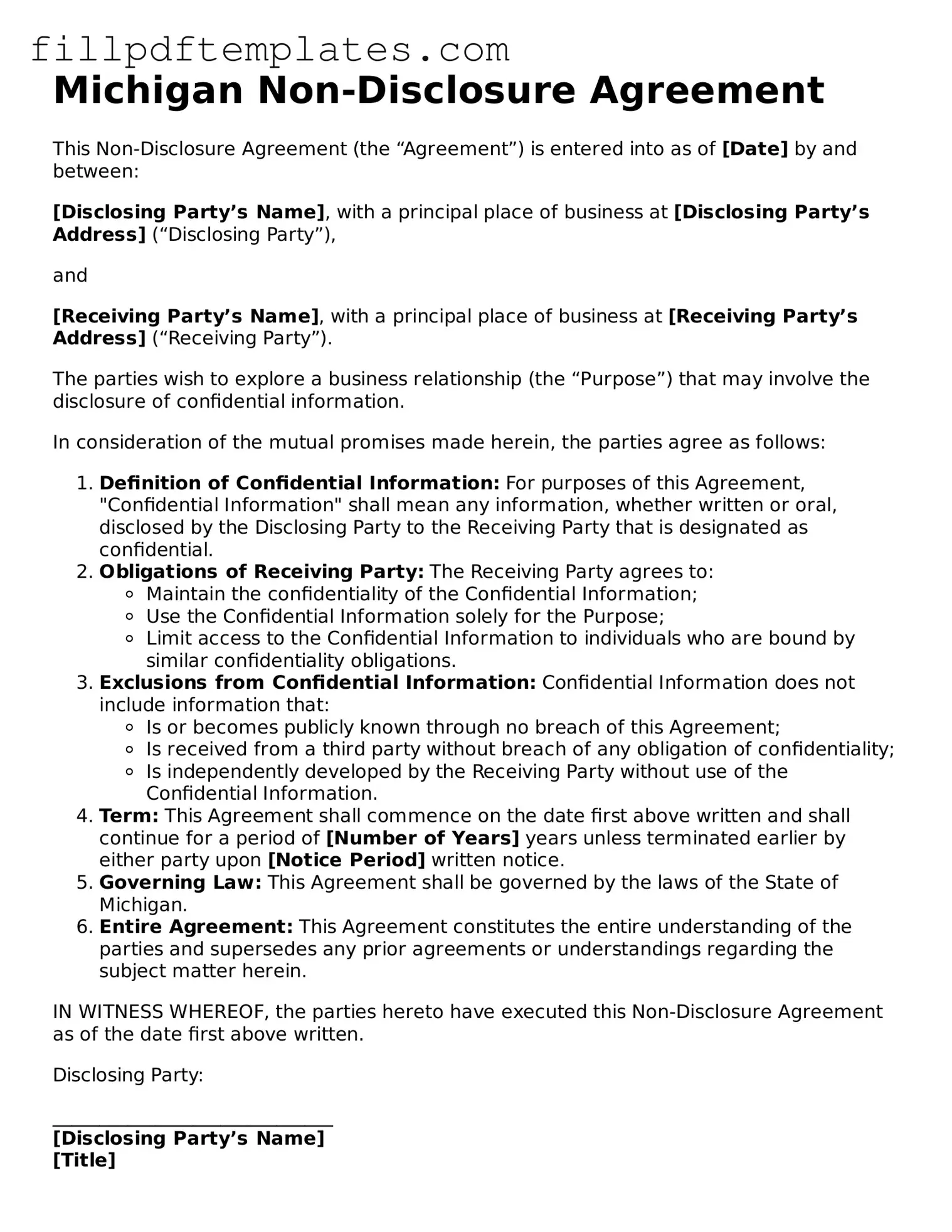Michigan Non-Disclosure Agreement
This Non-Disclosure Agreement (the “Agreement”) is entered into as of [Date] by and between:
[Disclosing Party’s Name], with a principal place of business at [Disclosing Party’s Address] (“Disclosing Party”),
and
[Receiving Party’s Name], with a principal place of business at [Receiving Party’s Address] (“Receiving Party”).
The parties wish to explore a business relationship (the “Purpose”) that may involve the disclosure of confidential information.
In consideration of the mutual promises made herein, the parties agree as follows:
- Definition of Confidential Information: For purposes of this Agreement, "Confidential Information" shall mean any information, whether written or oral, disclosed by the Disclosing Party to the Receiving Party that is designated as confidential.
- Obligations of Receiving Party: The Receiving Party agrees to:
- Maintain the confidentiality of the Confidential Information;
- Use the Confidential Information solely for the Purpose;
- Limit access to the Confidential Information to individuals who are bound by similar confidentiality obligations.
- Exclusions from Confidential Information: Confidential Information does not include information that:
- Is or becomes publicly known through no breach of this Agreement;
- Is received from a third party without breach of any obligation of confidentiality;
- Is independently developed by the Receiving Party without use of the Confidential Information.
- Term: This Agreement shall commence on the date first above written and shall continue for a period of [Number of Years] years unless terminated earlier by either party upon [Notice Period] written notice.
- Governing Law: This Agreement shall be governed by the laws of the State of Michigan.
- Entire Agreement: This Agreement constitutes the entire understanding of the parties and supersedes any prior agreements or understandings regarding the subject matter herein.
IN WITNESS WHEREOF, the parties hereto have executed this Non-Disclosure Agreement as of the date first above written.
Disclosing Party:
______________________________
[Disclosing Party’s Name]
[Title]
Receiving Party:
______________________________
[Receiving Party’s Name]
[Title]
